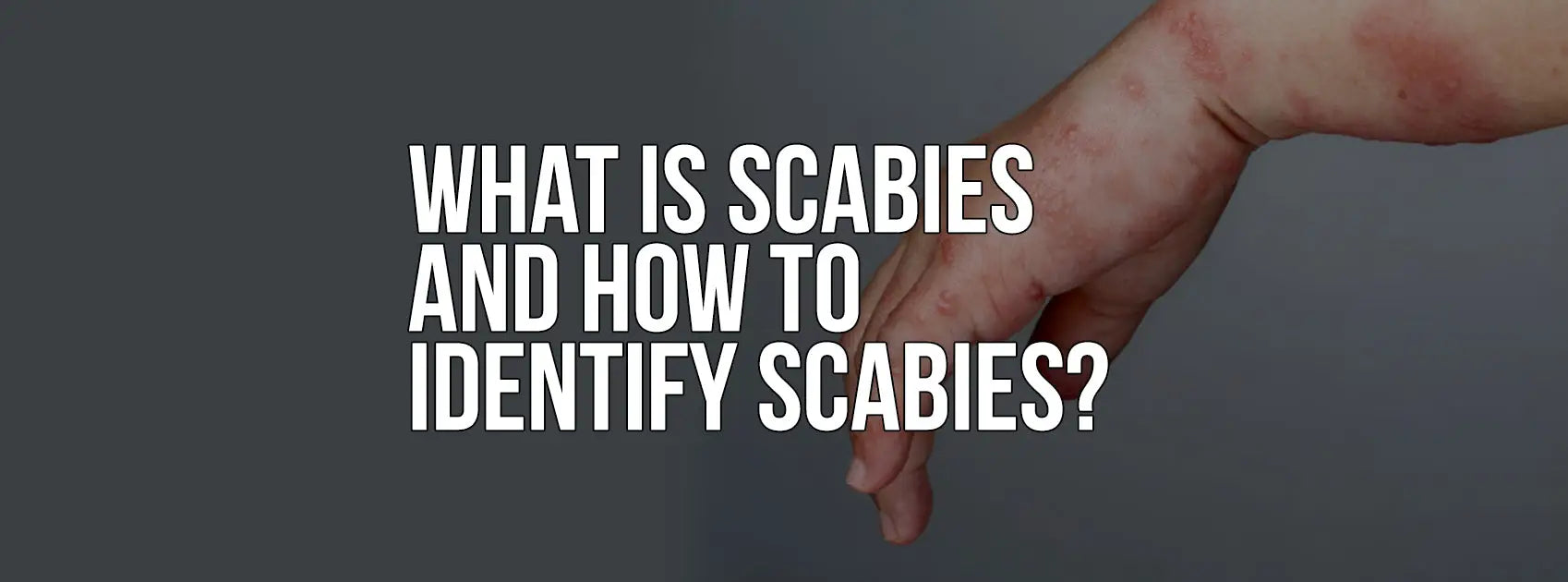
What is Scabies and How to Identify Scabies?
What is Scabies and How to Identify Scabies?
Scabies is an infestation of the skin by the human itch mite (Sarcoptes scabiei var. hominis). The microscopic scabies mite burrows into the upper layer of the skin where it lives and lays its eggs. The most common symptoms of scabies are intense itching and a pimple-like skin rash. The scabies mite usually is spread by direct, prolonged, skin-to-skin contact with a person who has scabies.Scabies is found worldwide and affects people of all races and social classes. Scabies can spread rapidly under crowded conditions where close body and skin contact is frequent. Institutions such as nursing homes, extended-care facilities, and prisons are often sites of scabies outbreaks. Child-care facilities also are a common site of scabies infestations.
BM211 may help with pimple-like irritation, burrows, or skin rash, especially between the figures, skin folds, elbow, wrist, shoulder blades, breast, and male genital organs, and intense itching.
What are the signs and symptoms of scabies infestation?
The most common signs and symptoms of scabies are intense itching (pruritus), especially at night, and a pimple-like (papular) itchy rash. The itching and rash each may affect much of the body or be limited to common sites such as the wrist, elbow, armpit, webbing between the fingers, nipple, penis, waist, belt-line, and buttocks. The rash also can include tiny blisters (vesicles) and scales. Scratching the rash can cause skin sores; sometimes these sores become infected by bacteria.
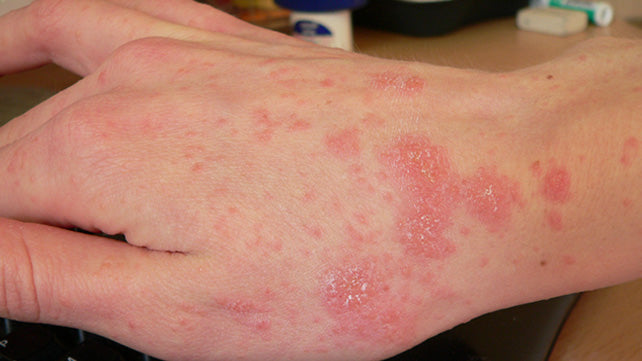
Tiny burrows sometimes are seen on the skin; these are caused by the female scabies mite tunneling just beneath the surface of the skin. These burrows appear as tiny raised and crooked (serpiginous) grayish-white or skin-colored lines on the skin surface. Because mites are often few in number (only 10-15 mites per person), these burrows may be difficult to find. They are found most often in the webbing between the fingers, in the skin folds on the wrist, elbow, or knee, and on the penis, breast, or shoulder blades.
The head, face, neck, palms, and soles often are involved in infants and very young children, but usually not adults and older children.
Persons with crusted scabies may not show the usual signs and symptoms of scabies such as the characteristic rash or itching (pruritus).

How to Identify Scabies?
Scabies signs and symptoms include:- Itching, often severe and usually worse at night
- Thin, irregular burrow tracks made up of tiny blisters or bumps on your skin
- Between the fingers
- In the armpits
- Around the waist
- Along the insides of the wrists
- On the inner elbows
- On the soles of the feet
- Around the breasts
- Around the male genital area
- On the buttocks
- On the knees
In infants and young children, common sites of infestation usually include the:
- Scalp
- Palms of the hands
- Soles of the feet
How did I become Infected?
Scabies is contagious and affects almost 300 million people yearly. It spreads through physical contact and can cause a widespread outbreak. It is highly contagious, and you can catch it by being near someone who is infected. The more knowledgeable we are, the easier it is to prevent the mites from jumping from one person to the other.
10 ways, how you can get infected:

1. Sexual relations with an infected person
Contrary to popular belief, you can contract scabies through sexual relations. The risk factor is immense because mites can jump on you through the slightest skin contact. What’s even more alarming is that they are contagious even when there aren’t visible signs on the skin. Having unprotected sex is always Russian roulette, but scabies makes it even more dangerous. The best thing to do would be to avoid having such relations.
2. Children In Daycare
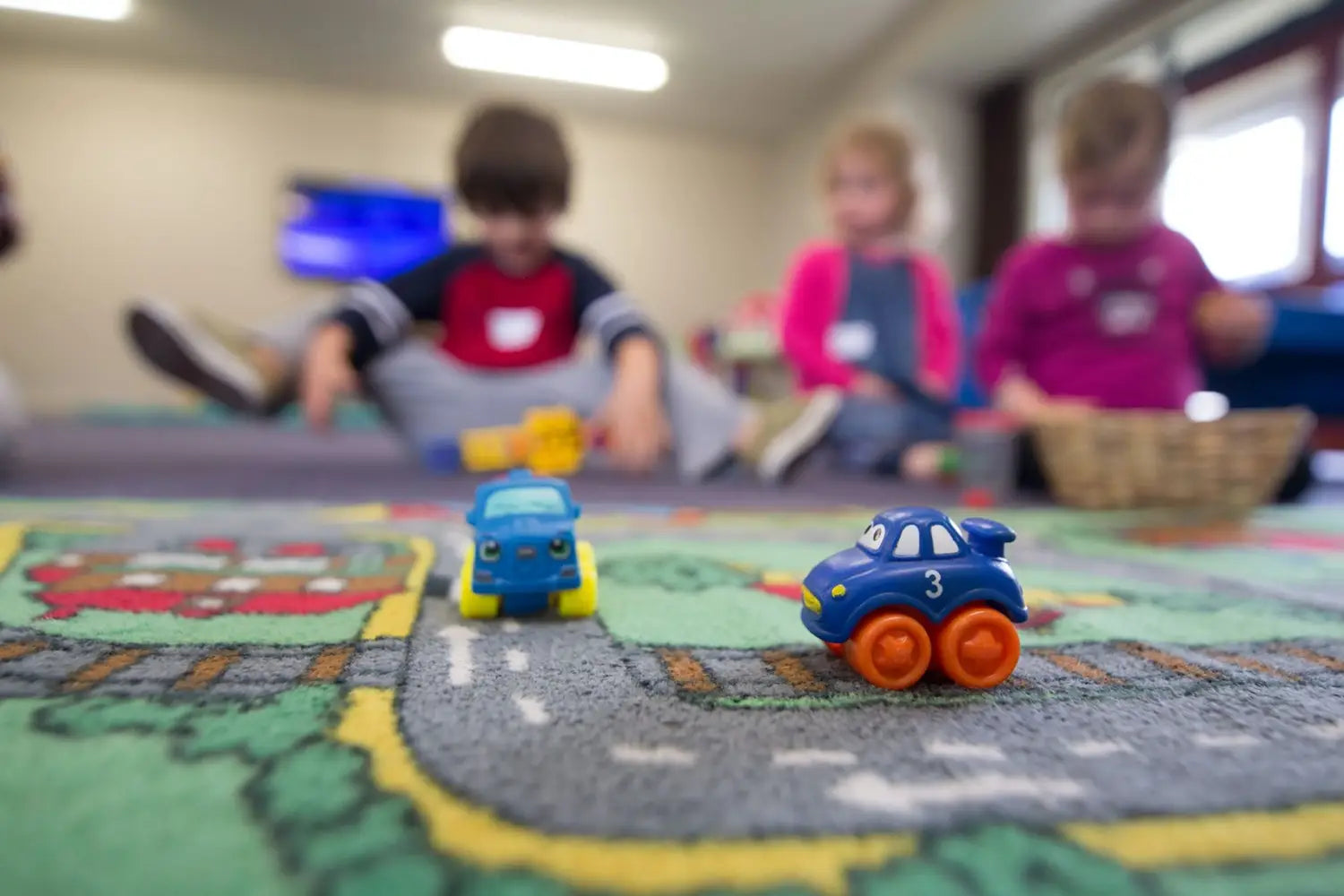
This is perhaps the most common way to contract scabies. When you send your child to daycare, you always aim to send him or her to the best environment possible. What you cannot control, however, is the way other parents take care of their kids. Your child might end up contracting scabies, and through them, your whole family could become infected. Having your child play with lots of other kids is always a health risk.
3.Public Transport

Public transportation might be the easiest way to get infected. A simple brush with someone infected might jeopardize your health. If you see someone with suspicious rashes on their skin, don’t hesitate to move away. It’s always best to play it safe.
4.Hospitals
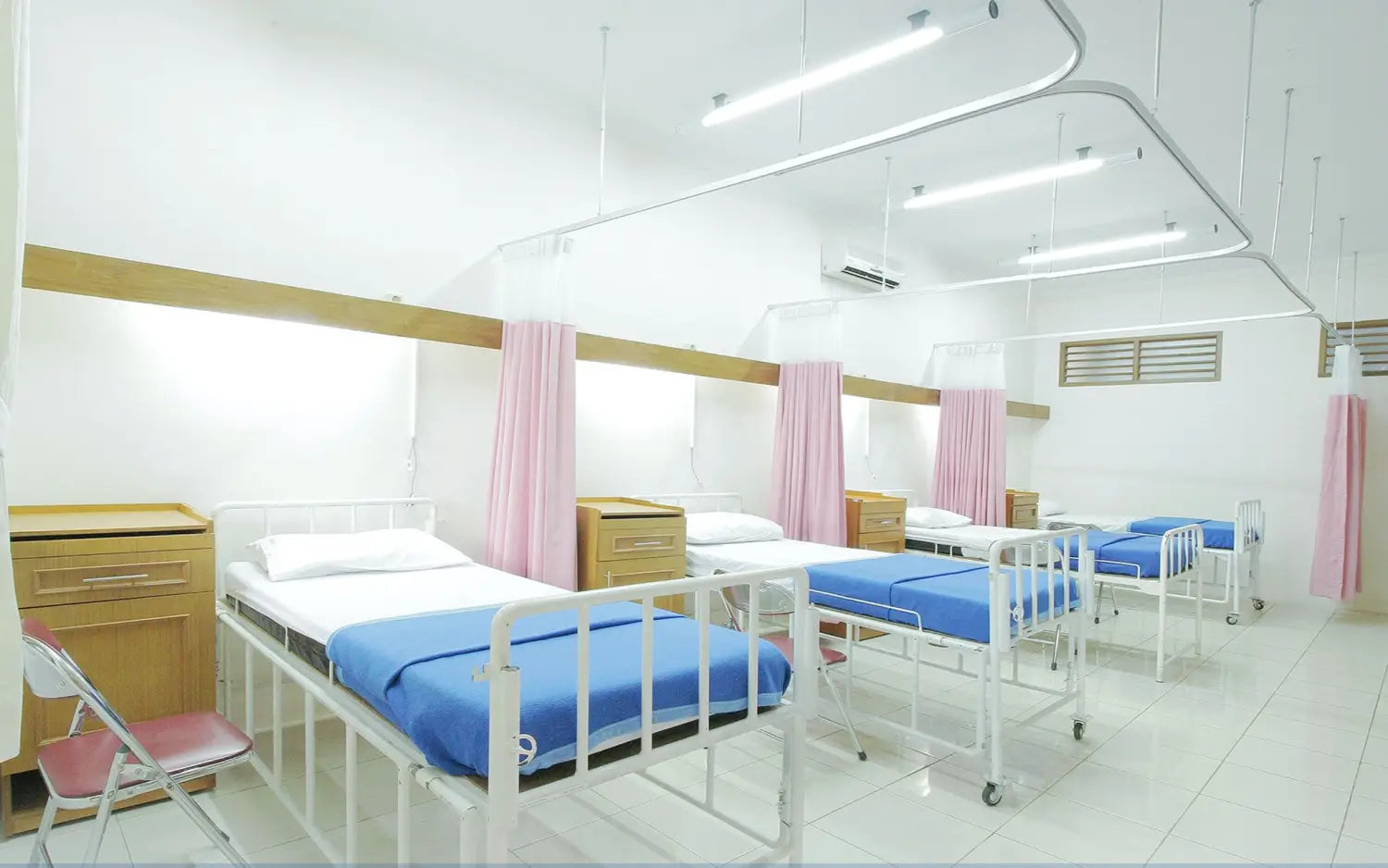
Despite hospitals being places for treating disease, they also carry a significant risk. By lying in a bed after someone who had scabies, you might get infected. The best way to prevent this from happening is to provide yourself with the best medical care. No matter how much it costs, you should always choose the cleanest and most sterile facility. Things might get complicated if you had a risky surgery and your immunity is at risk. You wouldn’t want scabies to mess up your recovery process.
5. Waiting rooms in health care centers

Aside from hospitals, waiting rooms are another breeding ground for scabies. Many people with health problems are sitting in one room. That’s a recipe for a medical disaster. If you’re already in need of medical care, it wouldn’t be wise to risk contracting scabies. When entering the room, assess the situation and see what kinds of risk the room may carry. The best possible thing to do would be not to sit next to anyone and stand. Yes, it may tire you, but it’s best not to risk jeopardizing your health further. If the medical facility isn’t in good condition, leave and get care somewhere else.

Imagine lots of sweaty people passing through the same room, day in and day out. Although gym personnel clean the locker rooms a few times a day, it can be in vain. There is only so much that they can do to prevent scabies from spreading. They can’t control who brings them in and what kinds of people come in. The best thing to do is choose a gym that has good cleaning methods. If you don’t have to, don’t sit on the benches and don’t leave your clothes lying around. Being careful goes a long way.
7. Fitting rooms at stores
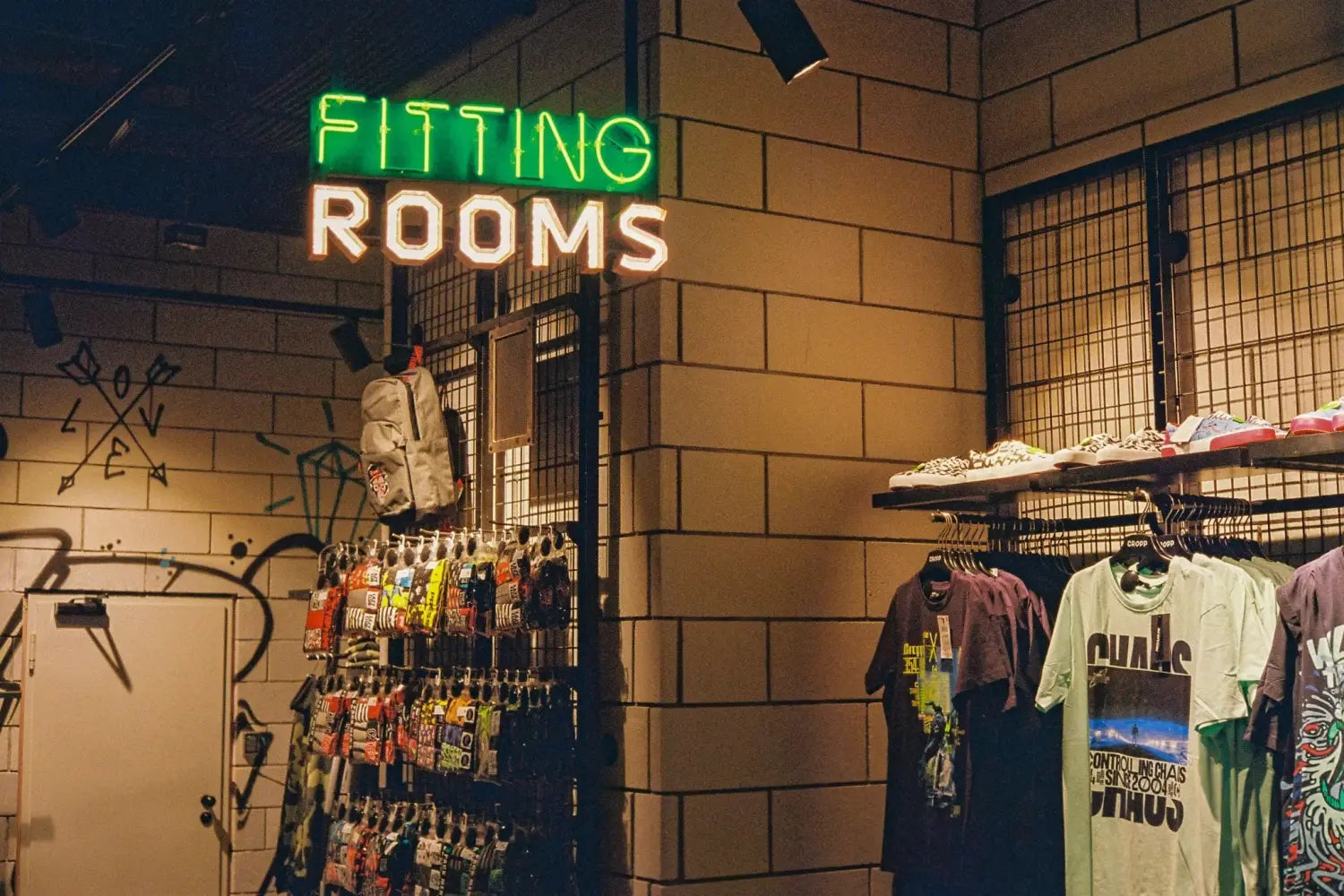
When store clerks take returned apparel, they don’t wash it. You can’t know who wore it before you and whether they had scabies or not. That’s why it’s good to get to know the cleaning policy of every store and see how they deal with the clothes. If you try anything on, be aware that it carries risk
8. Cafes at beaches

Beaches are another place you risk getting infected with scabies. Especially with sunbeds, as they see hundreds of people lying in them every day. You never know who was there before you and if the personnel clean them at all. If you’re going to use sunbeds, make sure you put your towel on them and wipe them with wet wipes. That way, you will be sure that the risk of getting scabies is minimal.
9. Doorknobs

There is a common saying that the doorknob is dirtier than the toilet. That saying is completely true. It is so because hands touch everything and get in contact with everything. The only viable solution to this problem is to wash your hands every chance you can. It’s the only foolproof way of combating the risk of scabies. It may take some time getting used to, but it’s for the greater good.
10. Public computers

BM211 may help with pimple-like irritation, burrows, or skin rash, especially between the figures, skin folds, elbow, wrist, shoulder blades, breast, and male genital organs, and intense itching.
Always follow carefully the instructions provided by the doctor and pharmacist, as well as those contained in the box or printed on the label. When treating adults and older children, scabicide cream or lotion is applied to all areas of the body from the neck down to the feet and toes; when treating infants and young children, the cream or lotion also is applied to the head and neck. The medication should be left on the body for the recommended time before it is washed off. Clean clothes should be worn after treatment.
In addition to the infested person, treatment also is recommended for household members and sexual contacts, particularly those who have had prolonged skin-to-skin contact with the infested person. All persons should be treated at the same time in order to prevent reinfestation. Retreatment may be necessary if itching continues more than 2-4 weeks after treatment or if new burrows or rash continue to appear.
You also might check and be aware of all the side effects traditional medicine has.
Alternative Treatments
One of the safe and successful ways you can also treat Scabies is with homeopathic remedies.There is All natural health remedy for scabies you can take a look at by clicking the link.
If I come in contact with a person who has scabies, should I treat myself?
No. If a person thinks he or she might have scabies, he/she should contact a doctor. The doctor can examine the person, confirm the diagnosis of scabies, and prescribe an appropriate treatment. Products used to treat scabies in humans are available only with a doctor’s prescription.
Sleeping with or having sex with any scabies infested person presents a high risk for transmission. The longer a person has skin-to-skin exposure, the greater is the likelihood for transmission to occur. Although briefly shaking hands with a person who has non-crusted scabies could be considered as presenting a relatively low risk, holding the hand of a person with scabies for 5-10 minutes could be considered to present a relatively high risk of transmission. However, transmission can occur even after brief skin-to-skin contact, such as a handshake, with a person who has crusted scabies. In general, a person who has skin-to-skin contact with a person who has crusted scabies would be considered a good candidate for treatment.
To determine when prophylactic treatment should be given to reduce the risk of transmission, early consultation should be sought with a health care provider who understands:
- the type of scabies (i.e. non-crusted vs crusted) to which a person has been exposed;
- the degree and duration of skin exposure that a person has had to the infested patient;
- whether the exposure occurred before or after the patient was treated for scabies; and,
- whether the exposed person works in an environment where he/she would be likely to expose other people during the asymptomatic incubation period. For example, a nurse or caretaker who works in a nursing home or hospital often would be treated prophylactically to reduce the risk of further scabies transmission in the facility.
Conclusion
Although Scabies is very contagious it is very treatable too!Find yourself the safest way to treat it, or even better, there is also always the way to prevent it.
Prevention
To prevent re-infestation and to prevent the mites from spreading to other people, take these steps:- Clean all clothes and linen. Use hot, soapy water to wash all clothing, towels and bedding used within three days before beginning treatment. Dry with high heat. Dry-clean items you can't wash at home.
- Starve the mites. Consider placing items you can't wash in a sealed plastic bag and leaving it in an out-of-the-way place, such as in your garage, for a couple of weeks. Mites die after a few days without food.
BM152 may help your body deal with skin blisters, blisters filled with pus, burst, and scabbed over, that are more prominent on the face and scalp and less prominent but present on arms and legs.BM158 is recommended for yellow skin disorder, catarrhal jaundice, jaundice yellow discoloration of the skin and the conjunctiva, pale skin, pale urine, obstructive jaundice, liver cell jaundice, hemolytic jaundice, furred tongue, fever, sensitiveness over the liver and offensive stool.BM141 is best used for issues related to vitiligo, including skin discoloration, burning sensations in various body parts, and white spots on the skin.




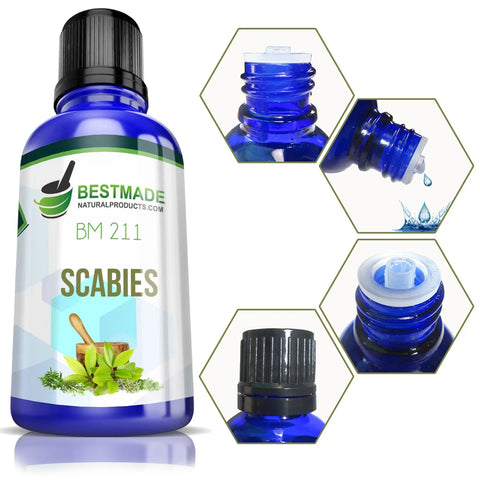
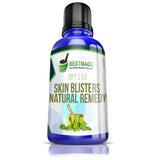

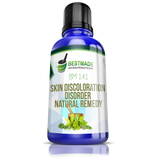
Dejar un comentario